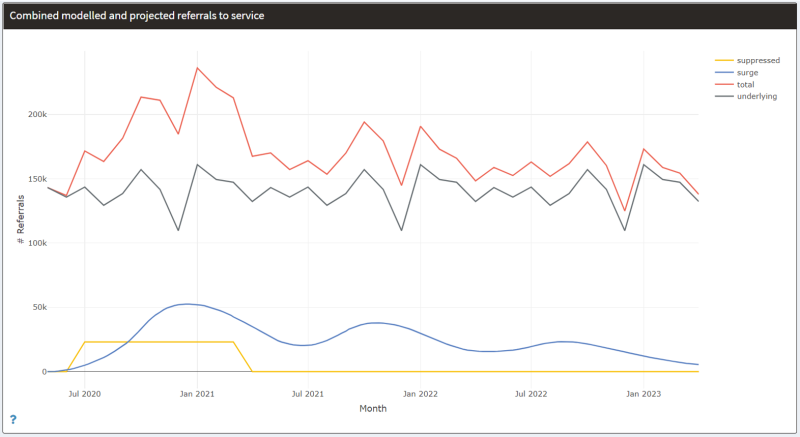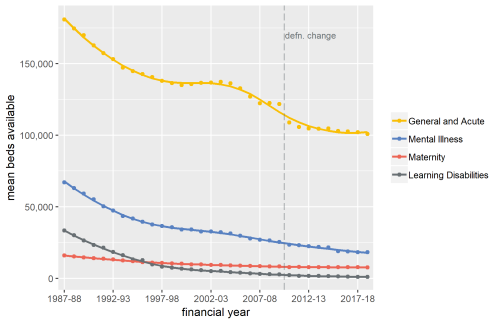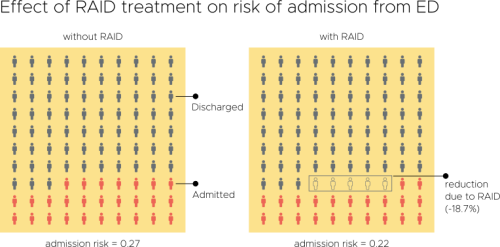Early in the Covid pandemic, it became clear that people’s mental health would suffer. Whether through bereavement, unemployment, social isolation, not being able to access support services – or a host of other routes – an alarming picture began to emerge and attract attention.
The detail of this picture has become progressively clearer. Press reports, population surveys, stories from service users and staff; evidence has emerged and accumulated. We are gaining an increasingly refined understanding of exactly how bad the pandemic has been for the nation’s mental health.
Against this background – and as part of a national analytical collaboration – the Strategy Unit has produced a model to help local services plan their response. Using this model, we estimate that:
- There will be around 11% more new referrals to mental health services, each year for the next three years; and
- Associated costs amount to an extra £1 billion a year. This is around 8% of annual NHS expenditure on mental health services.
Moreover, these figures are in addition to the approximately 500,000 people that were not able to access services during the first national lockdown. These headline results are shocking. They are useful for seeing the scale of coming demand and for attracting appropriate attention. The document below shows how we reached these figures
But the real value of the model is in local planning: in helping local systems and services to plan a response. Following work with Mersey Care, we have released two products to help this:
1: A web-based interactive version of the model
Local systems and trusts can use this tool to produce estimates for their area and their services. Results allow them to see where increased demand is likely to come, which population groups are most likely to see increased need, and which services are likely to be in high demand. This forms an essential basis for planning a response and supporting some of the most vulnerable in our society.
Please access the model below:
2: The code underpinning the model
The model and application code are freely available under the open source MIT license. Local analysts can use the underlying code to take this work on and produce more refined, highly localised estimates. We want this way of working to become the norm: total transparency so that decision makers know exactly what is in the analysis they are working from.
To access this, please click here - https://github.com/The-Strategy-Unit/723_mh_covid_surge_modelling/
We delivered a walk-through huddle on the model and tool for NHS Futures on the 26th November 2020. The recording and associated materials are here - https://future.nhs.uk/connect.ti/DataAnalyticsCovid19/view?objectID=24107216 - registration required.
Alternatively, you can watch the recording directly here:
We see this work as a helpful start, not the final word. So we would like to hear from services, analysts and decision makers: how have you used this model? What was it helpful for? What changes or refinements would you have liked? And how have you taken it on and developed it?
If you have any feedback or further questions, please contact us via strategy.unit@nhs.net.
CC BY-NC-ND 4.0

This work is licensed under a Creative Commons Attribution-NonCommercial-NoDerivatives 4.0 International License.



